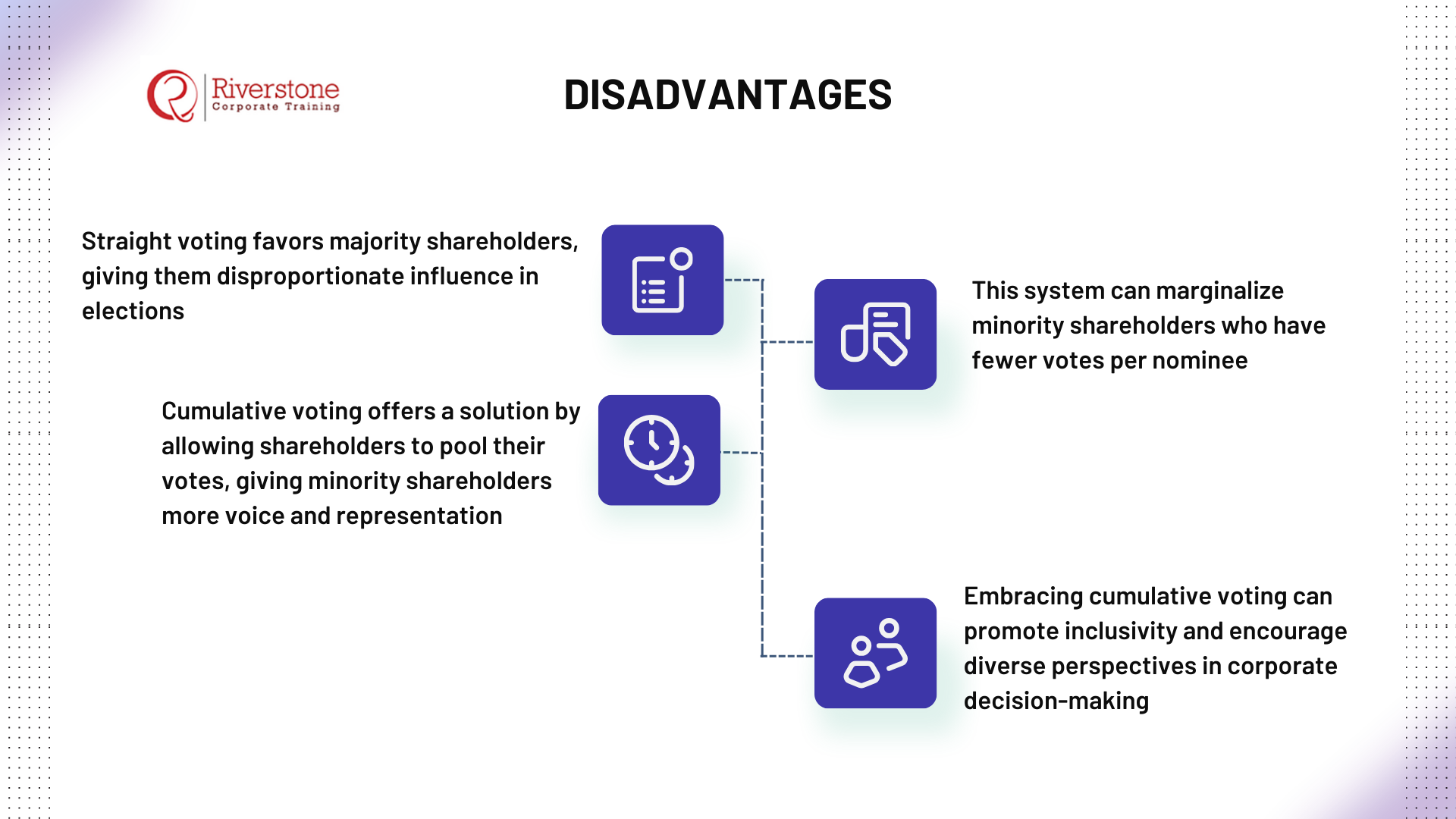
What is Cumulative and Straight Voting?
There are many considerations to make when figuring out how to finance your business. Selecting which way to raise funds each way holds other questions to consider. Like with choosing to issue shares. Other considerations to be made would be the type of shares, as well as rights. When these questions are ignored by incorporators, there can be serious consequences. This is why many entrepreneurs and professionals turn to finance courses for non-financial managers in Singapore to better understand capital structure decisions. Additionally, applying qualitative analysis in company performance evaluation Singapore can help assess the broader implications of these financial choices beyond the numbers.
A big example of this corporations not considering voting rights, not selecting types of rights to grant shareholders. Its easy enough to distinguish between the two types of rights to grant shareholders upon voting to fill up important seats within the business. But in the busy world of putting together a corporation, discovering this information requires time and energy, which is not very expendable for incorporators. Here, you’ll learn the difference between each type of rights to grant shareholders —knowledge that’s just as foundational as understanding the basic accounting equation explained for beginners Singapore.
First Option:
Cumulative Voting:
When cumulative voting is selected as the right type of voting system to fill executive roles, shareholders are granted certain rights. These rights allow for shareholders to have votes equaling the number of shares held multiplied by the number of different positions the shareholder is voting for.
In this hypothetical example, consider if this model would work for your corporation’s open seat voting.
A shareholder owns 200 shares in “PIE Company”, and there are five candidates, and three open seats up for grabs. The shareholder has 600 shares to vote with in total, if using cumulative voting. The shareholder can divide votes up however they’d like. They could give three of the five candidates equal votes or put all their votes into one candidate.
Cumulative voting brings the wants to light of shareholders belonging to minority during any Board of Directors’ meetings. This is because when using cumulative voting, the shareholders can cast every one of their votes on a single candidate. With all this said, cumulative voting isn’t commonly used by these companies. Instead, many choose to utilize straight voting, which allows for more weight on the input of shareholders of higher amounts of shares bought.
Second Option:
Straight Voting:
The other option to finance your corporation is called straight voting. With this option, each shareholder only has votes in number equal to the number of shares they own, for each candidate. For example, if a shareholder owns 1000 shares in PIE Company, and there are five people running for the open seats, the shareholder retains 5000 votes. The catch here is, no single candidate may have more votes than the number of shares owned.
Straight voting is commonly called statutory voting and was built to help make company decisions with the input of shareholders.
Disadvantages:

For example, a more relevant shareholder owning 100 shares has more influence over the election than a minority shareholder owning 50 shares. With straight voting, the majority shareholder gets the chance to input 100 cotes per candidate, while a smaller investor with 50 shares will only get to vote for up to 50 times for a nominee.
The votes are allocated in proportion to the number of candidates running for the open seat. The majority shareholder will always have the upper hand when it comes to choosing the winning nominee. Under straight voting, minority shareholders don’t have the weight other shareholders do. To combat this unbalance, the use of cumulative voting should be enacted more often, bringing the minority voters room to be heard and new ideas to be examined.
A Practical Guide for Singaporean Shareholders :
Develop a user-friendly step-by-step guide through which the Singaporean shareholders can be empowered to learn and compute their true voting power when using cumulative as well as straight system of voting. Provide hypothetical Singaporean company and real life illustrative examples (e.g. using the elected 3 directors having X shares on issue). In the case of cumulative voting, you should show how cross shareholders can tactically plump their votes to have a possible board representation. Having an interactive introduction to a very complicated subject perhaps supplemented with simple formulae or even an inbuilt calculator would make the whole thing instantaneously practical and very useful to non professional individuals and even institutions in Singapore. This resource could be further enhanced by integrating interactive e-learning content development services Singapore professionals trust, or aligned with the best finance training courses for working professionals Singapore has to offer.


